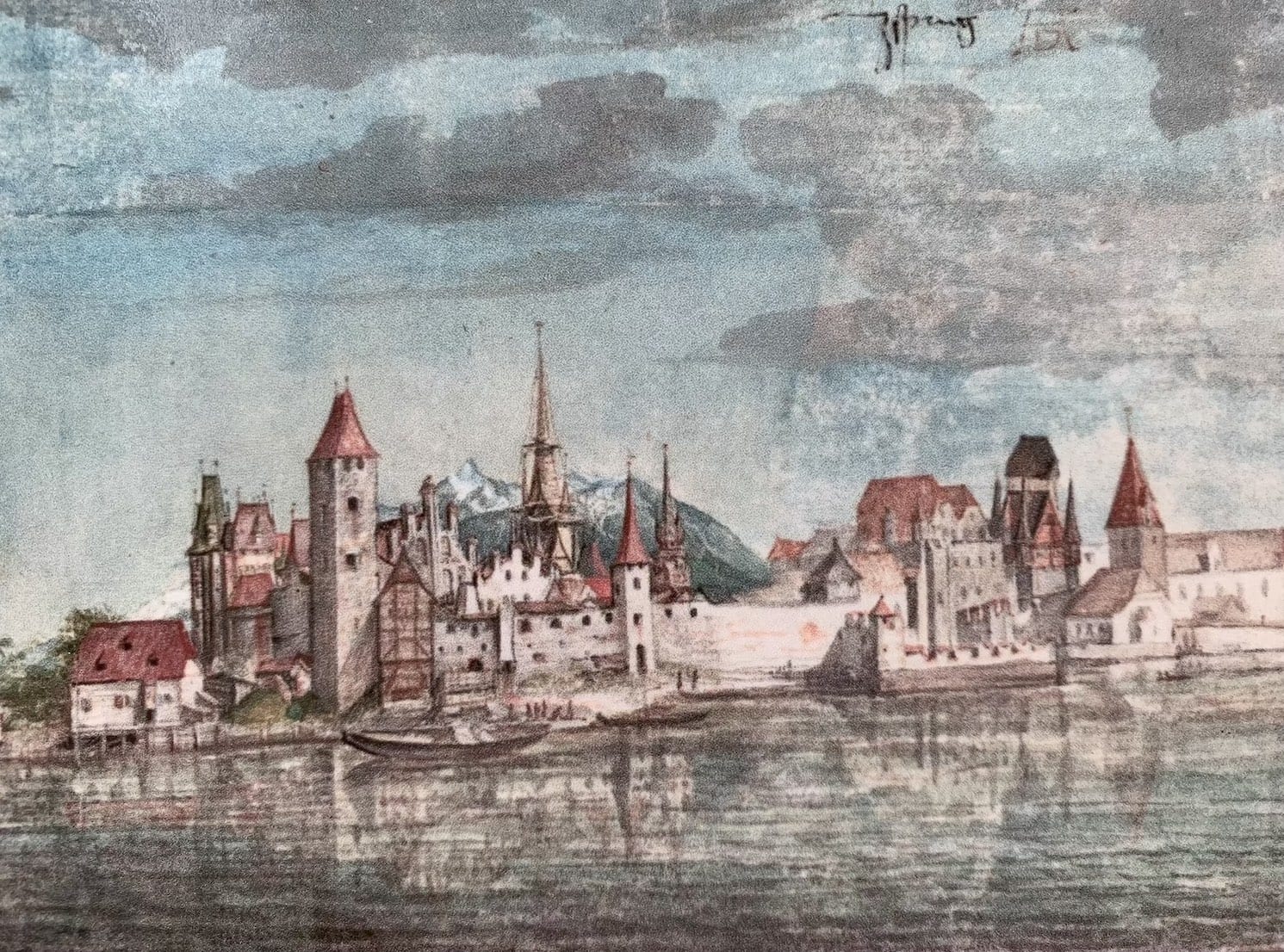Siegmund der Münzreiche
Siegmund der Münzreiche
On Friedl mit der leeren Tasche followed Siegmund der Münzreiche as Prince of Tyrol. Siegmund of Tyrol (1427 - 1496) had the worst possible start to his reign. When his father Frederick died, Siegmund was only 12 years old. He was therefore taken over by his uncle Frederick III, the Emperor of the Holy Roman Empire and father of Maximilian I, into involuntary custody and guardianship. You could say that Siegmund began his career as a hostage of the emperor, his own cousin. Tyrol was now a rich county and the emperor was reluctant to relinquish direct control over it. It was only when the Tyrolean estates protested against this paternalism that Siegmund was able to take office. The Tyrolean Diet had taken over the reins of government in the absence of a sovereign prince, thereby demonstrating its political clout. At the age of 18, Siegmund moved to Innsbruck to take over the official duties. Four years later, he married Eleanor of Scotland (1433 - 1480), the visually unattractive 16-year-old daughter of King James of the House of Stewart. The marriage was to remain childless.
Under Prince Siegmund, there were many innovations on the one hand and a bloated and expensive court on the other. In Innsbruck and the surrounding area, urban life attracted new crafts. In 1453, the princely silver smelter opened in today's Universitätsstraße. In 1484, Siegmund had the mint moved from Meran in South Tyrol to Hall, which earned him the nickname Siegmund der Münzreiche brought in. Two years later, a princely mill was built on the Sill Canal, which was to form the basis for the early industrialisation that developed in the following years. He issued the Schwaz mountain regulations, which was to become the model for all Habsburg mines. Mining officials were given more rights within their sphere of influence, similar to the universities. There were special regulations for miners within society, as they were a highly sought-after labour force. One can speak of an early social and labour law agreement. The miners worked hard, but earned relatively well. The same applied to the mint and the Hall salt works. A wealthy middle class began to emerge.
During his opulent reign, Innsbruck had become a centre of attraction for craftsmen, goldsmiths and artists. The immigrants often came from the aristocracy and did not want to give up their lifestyle in Innsbruck. A special form of metal industry established itself in Mühlau. Plattner created armour and harnesses for noblemen who wanted to present themselves in a manner befitting their status, both on military campaigns and at tournaments. Siegmund was their best customer. He bought a number of tournament armours for himself and as appreciative gifts for aristocrats of foreign courts and guests of honour. The workshops on the Mühlaubach became the leading workshops of their kind in the world. It was not until the 17th century that the richly decorated armour went out of fashion. The city tower near the Old Town Hall as an expression of the city's prosperity and the first parts of the Hofburg were built under Siegmund. A glass painter settled in Innsbruck. The court library grew in step with Siegmund and Eleonore's humanistically scholarly guests. Both were considered art-loving and interested in literature. Before the invention of printing, books were an expensive hobby. Travellers and showmen were also welcome at court to entertain local and international guests.
Siegmund's opulent lifestyle not only cost him a lot of money, but also his political reputation and, at the end of his career, probably also the princely throne. His second marriage was to Katharina of Saxony (1468 - 1524), a lady from a highly aristocratic electoral family. It was probably also thanks to the influence and court behaviour of Siegmund and his two wives that the expenses of the Coin rich exceeded the income from taxes, salt works and mines in the long term. At the royal wedding in 1484, the bride's procession alone comprised 54 carriages. The guests had to be accommodated and catered for in Innsbruck. Even with a wife 40 years his junior, the now senile Siegmund was granted a male heir, which must have been particularly bitter for him considering the 30 children he was rumoured to have fathered out of wedlock.
At the same time, times became tougher for those who could not keep up with the new pace of life in the city. It can be assumed that there were around 2000 townspeople at this time. Sigmund's court consisted of 500 people, not including his wife's court. These "strangers" caused a sensation in Innsbruck. The gap between the social classes grew. The witch trial of 1485 took place in a climate of envy, resentment and scepticism towards the new customs that were taking hold in Innsbruck.
Siegmund was not the most successful ruler of Tyrol, but is still fondly remembered today thanks to his services to the cultural upswing in Innsbruck. At the end of his reign, his court was overly bloated and expensive. A lost war with the Swiss Confederates obliged him to make payments, and a war with Venice also ended badly. Siegmund had to hand over Habsburg possessions in Alsace and what is now Breisgau to Charles the bold of Burgundy, the future father-in-law of Maximilian I. He sold the Austrian Forelands to the Duchy of Bavaria for a ridiculously low price and pledged the Tyrolean silver mines to Jakob Fugger. The Bavarian Wittelsbachs wanted to bring Tyrol back under their control through an inheritance agreement with Sigmund, who was mentally deranged due to his age. Only imperial pressure and the hasty intervention of the Tyrolean estates and Maximilian made it possible for the land to remain with the House of Habsburg.
Sights to see...
Gasthaus Weisses Kreuz
Herzog-Friedrich-Straße 31
Goldenes Dachl
Herzog Friedrich Straße
Hofzwerg und Burgriese
Hofgasse 12
